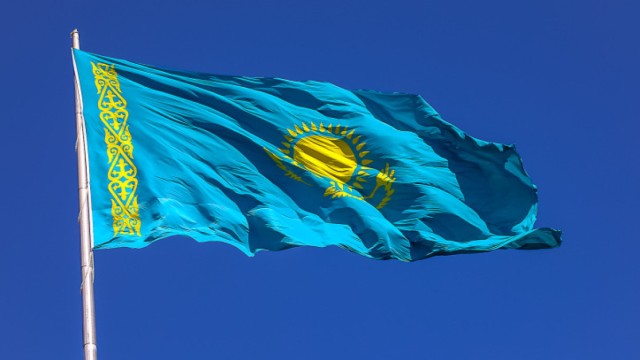
The original ‘Zhas Alash’ newspaper was found in Uzbekistan. The fourth issue of the newspaper, published on May 9,1921, is kept at the National Library of Uzbekistan named after Alisher Navoi. As it turned out, only the first page of the issue has survived. Experts classify it as a rare and valuable find.
“No one knows where this newspaper came from, who brought it? There’s no record of it anywhere. But since it’s a very valuable find, we store it in proper conditions. The newspaper is kept in a dark room where a certain temperature is maintained,” said Makhfuza Abdraimova, Leading Specialist of the National Library of Uzbekistan.
In the periodical, besides the Arabic script, the Cyrillic alphabet was also used. Kazakh scholars give their own explanation for this.
“We learned that the Cyrillic alphabet was not approved at that time, however some words were still in use. In the found copy of the newspaper, we see that some words in Russian were spelled incorrectly. For example, here the spelling mistake was made in the word ‘Понидельник’ (Monday) . As for the Arabic script, here we can say that it differs from the writing that came into use after the reform carried out by Akhmet Baitursynov. For example, instead of the letter ‘Ш’ (‘sh’) it is written ‘Ж’ (‘zh’) and so forth,” orientalist Samal Tuleubayeva explained.
The newspaper was published once every 15 days on four pages. There were two sections: news from abroad and state news. In this issue, one of the most relevant topics at that time was the ban on bride price and polygamy. It also contains an article on youth, written by an author named Gali Zhan.
“What did he want to say in an article for Kazakh and Kyrgyz students? In it, he writes about freedom, equality and a bright future. The author tries to raise the spirit of young people and asks them to go to their villages after graduation and educate the local population. The main message of the author's article is not to tolerate injustice,” said Ushkyn Saidirakhmanuly, Director of the ‘Alash’ Research Institute.
Despite the fact that the newspaper issue is carefully kept as a relic in the National Library of Uzbekistan, it is pretty worn out. But as experts say, it’s time to digitize it.
Translation by Assem Zhanmukhanova
Editing by Galiya Khassenkhanova









